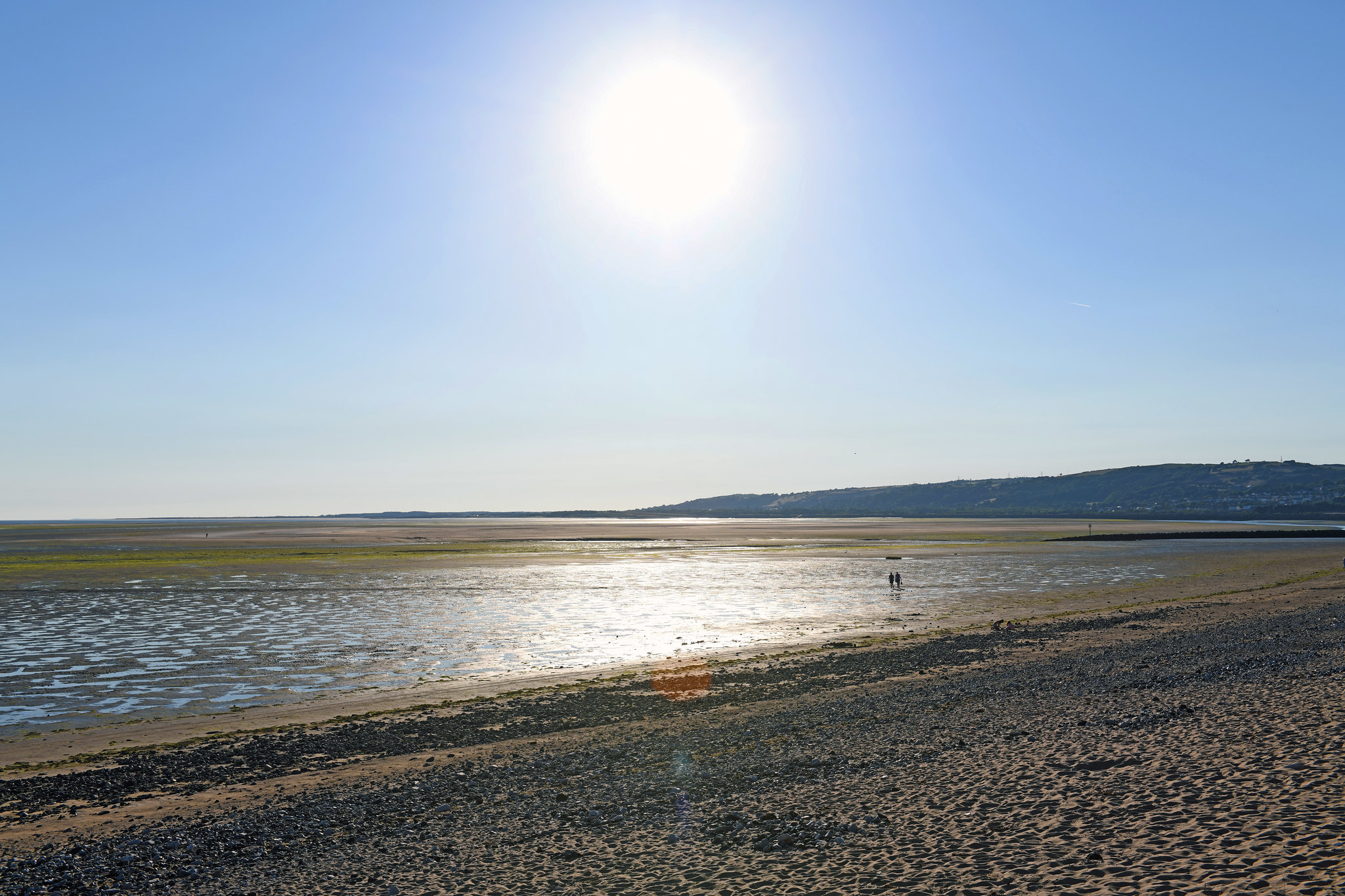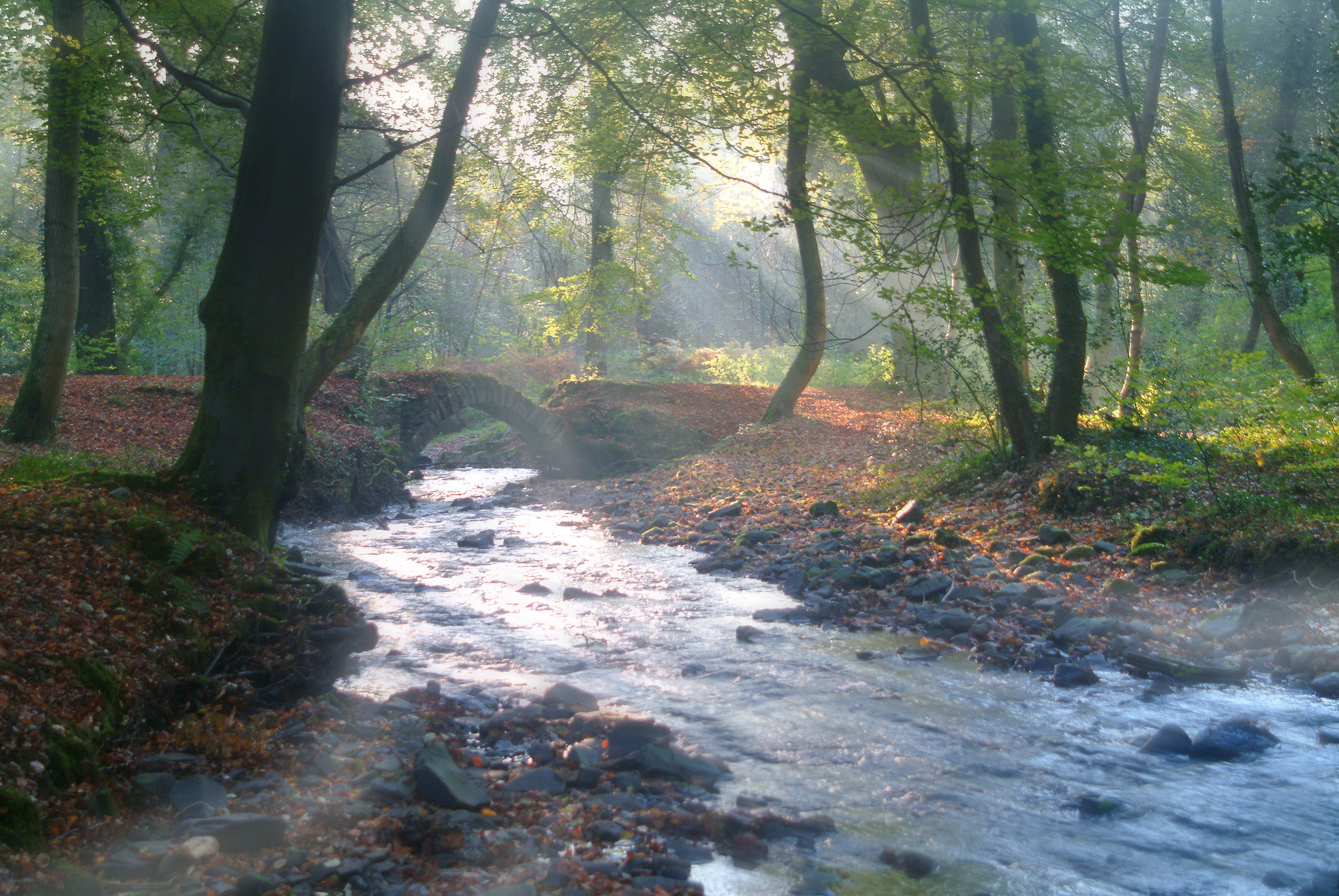Cross-cutting theme: Climate Change
Image: Llanelli Beach

Why is green and blue infrastructure important for climate change?
GBI plays a dual role in relation to climate change.
Firstly, the provision of greenways and spaces which encourage walking and cycling over car use can reduce carbon emissions.
Secondly, GBI can play a key role in mitigating and adapting to the pressures of climate change. Habitats of various types can be used to “sequester” carbon – that is, draw excess carbon in from the atmosphere.
Certain kinds of habitat can also act as natural defences against risks associated with climate change – notably flood risk and high temperatures.
What does national policy say?
Addressing climate change impacts and decarbonisation are crucial to achieving the objectives of the Environment (Wales) Act (2016) and the Well-being of Future Generations (Wales) Act 2015.
The Environment (Wales) Act 2016 requires the achievement of an overall 80% reduction in greenhouse gas emissions by 2050. The Well-being of Future Generations (Wales) Act 2015 sets objectives which require the development of a low carbon economy.
The ‘Future Wales’ National Plan to 2040 sets the direction for future development in Wales. Policy 8 (Flooding) promotes nature-based solutions to flooding as a preference over engineered solutions wherever possible – highlighting the role of the GBI network.
Resilience to climate change is included as one of the National Placemaking Outcomes as part of Planning Policy Wales. It highlights the key role of the planning system in tackling the climate emergency – including protecting ‘carbon sinks’ and using open spaces to adapt to impacts.
In relation to flood risk in particular, in 2019 the Flood and Water Management Act (2010) came into effect. Schedule 3 requires all new developments over 100 square metres to include SuDS features that meet requirements in terms of water quantity, quality, amenity and biodiversity.
In addition, the National Strategy for Flood and Coastal Erosion Risk Management in Wales (2020) sets out how sets out flooding and erosion risks should be managed more widely and who is responsible. In 2021, the Welsh government built on this legislative base and began requiring that climate change is a factor in assessing future plans for development. This reflects the fact that flood risk and coastal erosion in Wales is increasing as a result of climate change.
What does local policy say?
In 2019, Carmarthenshire County Council declared a climate emergency and made a commitment to become a net zero carbon local authority by 2030. Carmarthenshire has since been the first local authority in Wales to publish a Net Zero Carbon Action Plan, which was endorsed by the Council in February 2020.
The Action Plan identifies three objectives for future green infrastructure.
- Considering our global impact.
- Appropriate coastal management and planning.
- Community based actions.
The South West Wales Area Statement identifies the challenge of mitigating and adapting to a changing climate as one of the four biggest issues faced in the region. A pilot project was commissioned to develop climate change resilience plans for communities in Carmarthenshire.
Finally, Strategic Policy 2 of Carmarthenshire’s Local Development Plan (on Climate Change) requires development to respond to, be resilient to, and adapt to the impacts of climate change. This includes sustainable transport principles and minimising risk of flooding by incorporating SuDS and flood resilient design.
How does Carmarthenshire's GBI network help to address climate change?
Image: Castle Woods

The limited green routes for walking and cycling in Carmarthenshire have led to a dependence on the car. This has limited the contributions that the GBI network can make to the county’s net zero goals.
Woodlands and forests (a known carbon store) cover about one-seventh of Carmarthenshire. However around 70% of this cover is made up of plantations of introduced conifers rather than mixed broadleaf woodland.
Peatlands are known as one of the most valuable habitats types for ‘locking up’ carbon as the largest natural terrestrial carbon store. In the wider landscape surrounding Carmarthenshire’s towns, peatland ecosystems are being preserved through projects such as the Carmarthenshire Bogs Project.
What are the challenges and pressures?
The South West Wales Area Statement outlines expectations of more intense rainfall, more flooding in some areas as well as hotter, drier summers. Stakeholders consulted as part of this Strategy expressed significant concern over rising water levels locally and the need to take a proactive approach to adapting to changing weather patterns.
Carmarthenshire is particularly at risk of sea level rise and from various types of flooding – fluvial (from rivers), surface water, sewer and groundwater (see interactive map)
The Carmarthenshire Well-being Plan (2018-2023) highlights that, as a minimum, 5,587 properties in Carmarthenshire are at risk of flooding from rising sea levels.
The increased surface water run-off as a result of heavier rainfall is exacerbated by increase hard surfacing as part of new development. This causes increased risk of sewerage overflow into the county’s water bodies, contributing to the problems experienced in its water environment and aquatic habitats.
Climate Change: Summary of key issues
Efforts must be made to:
- address significant concerns over flood risk – which are increasing due to climate change.
- tackle the impact of flooding on water quality in rivers and seas.
- combat increasing temperatures in urban areas.
- recognise and protect the importance of peatlands as a carbon store.
- expand the range of habitat types to boost the ‘carbon sink’.
- address the impact of climate change on the resilience of ecosystems.